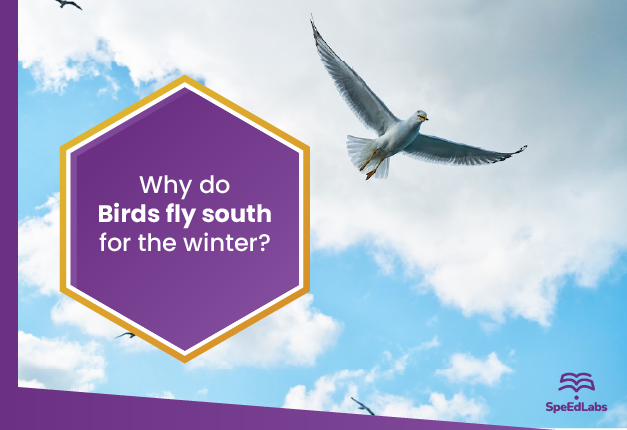As winter approaches, birds fly in a famous ‘V’ or ‘J’ formation across the skies. It occurs annually when birds move from their breeding (summer) grounds to their non-breeding (winter) grounds. What causes them to migrate in the winter? How do they find their way? Check it out!
Birds migrate to areas of abundance for several reasons, including diminishing resources on their breeding grounds, looking for food, and nesting areas. Those birds that nest in the Northern Hemisphere tend to migrate northward in the spring to take advantage of insect populations that are flourishing, budding plants, and the abundance of nesting places.
During the winter months, when insects and other food become scarcer, birds tend to migrate south. As long as an adequate supply of food is available, several species, such as hummingbirds, can withstand freezing temperatures as long as they can escape the cold.
What causes birds to fly south?
There is a logical reason for many birds to spend their winters in more pleasant, southern areas because of the sun’s warmth. This is not exactly true. Even in extremely harsh climates, birds can survive. Migratory animals move primarily in search of food, as do most other animals.
Plants and trees thrive in northern climates during the summer when insects are active. Birds want to breed where they can find food for their chicks and themselves easily when it’s time to breed. Food becomes scarce in colder climates, so it is time to move to warmer climates.
There are also ducks, geese, and other waterfowl that are good examples. It is extremely difficult for them to survive in their intended environment due to the freezing of their lakes and ponds. They must move to warmer climates to find adequate food, escape predation, and maintain a healthy quality of life. The birds fly in that V pattern to conserve energy and improve communication.
How far do the birds migrate?
In animal populations, migration usually refers to periodic, large-scale movements. When considering migration, it is also important to consider the distances travelled. Migration is usually not necessary for permanent residents. There is ample food available to them throughout the year.
Migrants who migrate short distances often travel from higher elevations to lower elevations on a mountainside. The distances covered by medium-distance migrants might range from a few hundred miles to several thousand miles.
Thousands of birds migrate to Mexico and Florida each year to overwinter in tropical climates. In addition, others need climates where food is abundant enough to sustain them. Mysore’s Ranganathittu Wildlife Sanctuary is renowned for hosting migratory birds from around the world that nest and breed there.
What makes the birds migrate?
There are many factors or mechanisms involved in a bird’s migratory behaviour. These mechanisms are not always fully understood. Several factors can trigger migration, including changes in day length, lower temperatures, food supply changes, and genetic predispositions.
Every spring and fall, people who keep birds in cages have noticed that migratory species flutter repeatedly toward one side as they go through a period of restlessness. Behavioural scientists in Germany even named this phenomenon Zugunruhe, which means migration restlessness.
Migratory patterns of birds vary from species to species and even within species.
How do birds find their way while migrating?
The more important question is how do birds know when to fly, where to go, and for how long?
Numerous studies and a widely accepted theory suggest that the shortening day signals the beginning of the migration, with the sun acting as a natural guide. Even when the seasons change, birds can compensate for the time of day and latitude by using their internal clocks.
The winds are relatively stable at night, which allows some nocturnal birds to save energy. So, some nocturnal birds prefer to travel at night. They are also less likely to trip over obstacles as they have fewer predators to worry about and star patterns to guide their navigation.
Various studies and research have shown that natural elements such as rivers, mountains, forests and roads can also serve as important landmarks along migration routes. Furthermore, they can detect and follow migration routes using the different smells around them. According to a new study, some birds may even have an internal magnetic compass that guides them while they navigate long distances.
It is now clear why birds migrate south, what they do once they reach their destination, and why some are brave enough to remain in the area through the cold season.
Also published on Medium.
